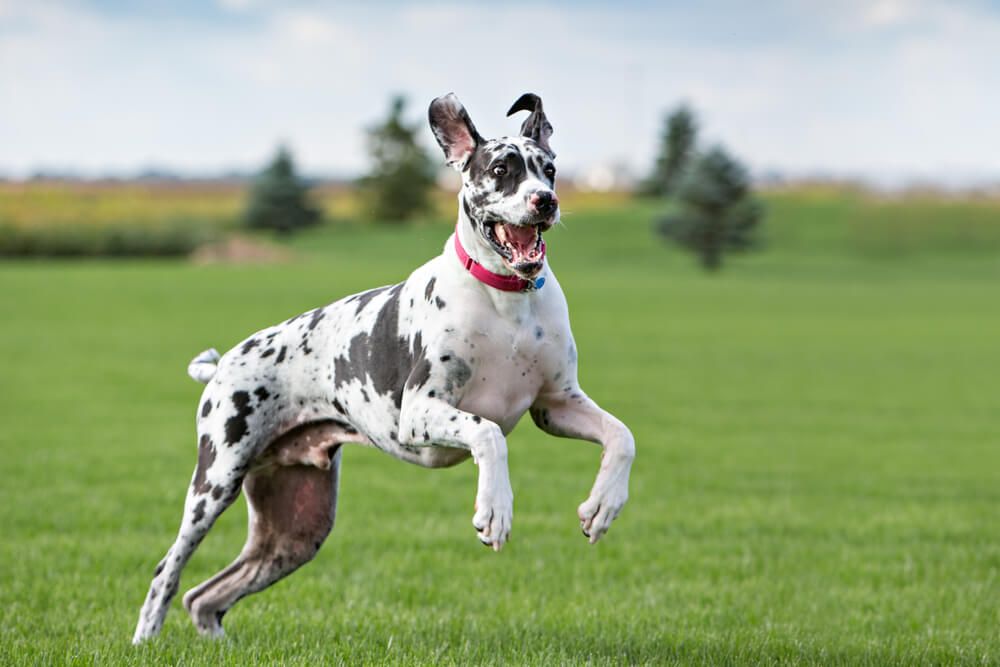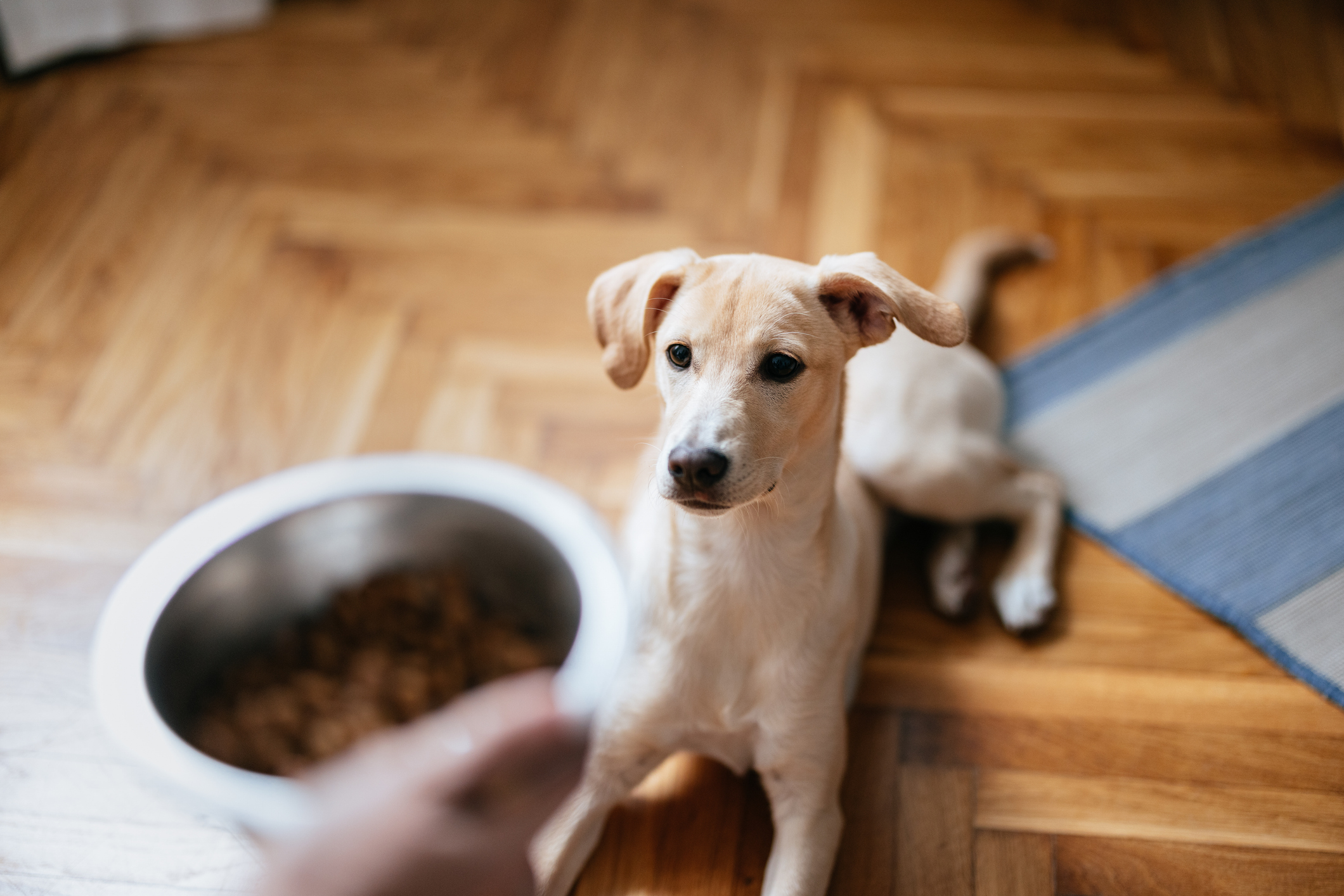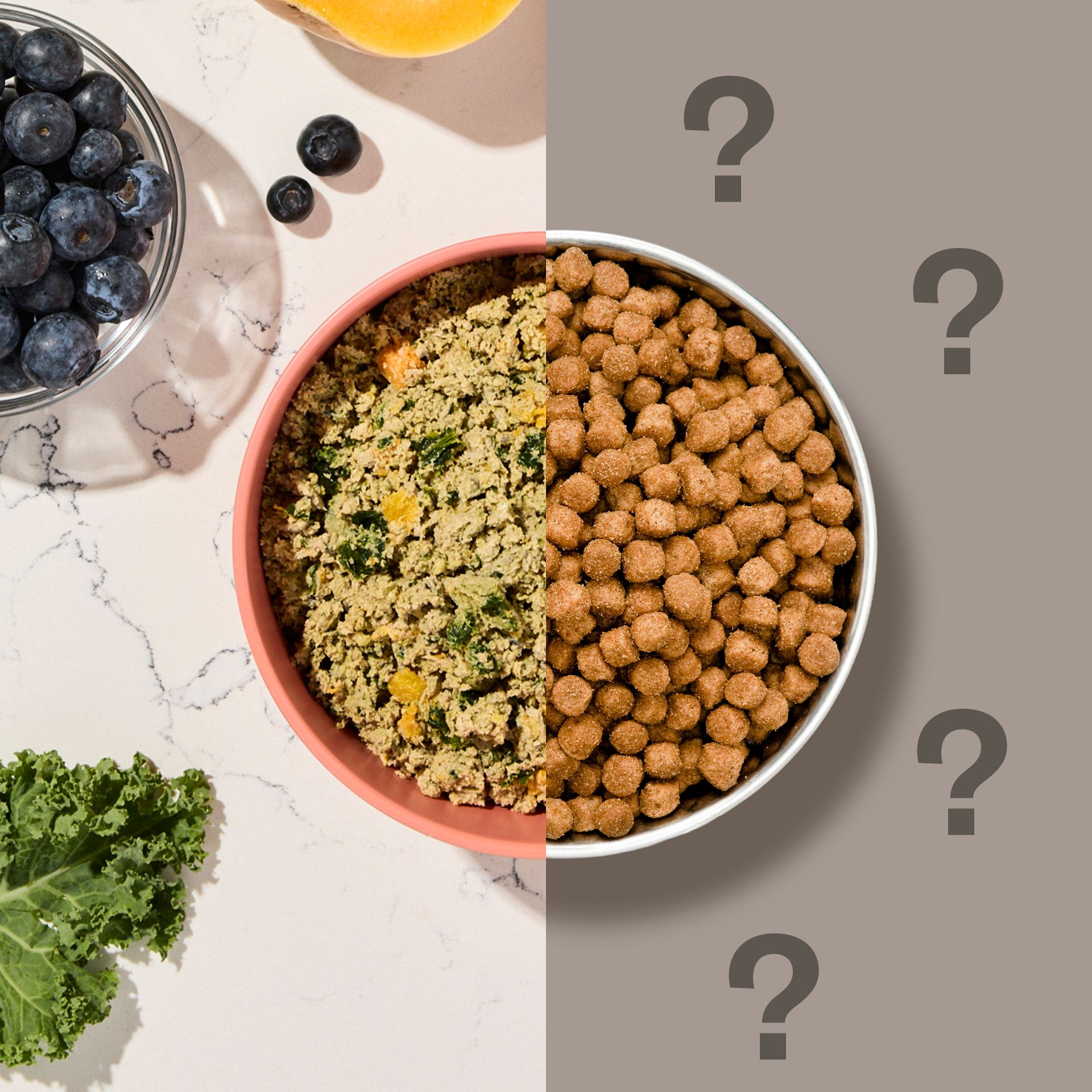Hey Ollie blog readers! We’re offering you an exclusive 60% OFF your starter box! Try now!
With their lovable, sweet, and playful temperament, Great Danes make excellent pets. These gentle giants do have a fairly short lifespan, though—typically around 8–10 years according to the American Kennel Club—and genetic issues and health conditions can pop up. Educating yourself about common Great Dane health problems before you get your first pup—or as continue on the path of companionship—can help to set your expectations and recognize early warning signs that something may be wrong.
“A Great Dane as a breed is not one that you should get casually,” says Dr. Betsy Miller, DVM MPH. “You should expect that you may have a 150-pound dog with a lot of medical costs throughout their lifetime. Anyone who wants a large dog should be aware that everything from antibiotics to surgery could be more expensive.”
One way to ensure your pup avoids making any condition worse is to maintain a healthy weight through a healthy diet. Ollie’s personalized formulas, developed by canine nutritionists, make it super simple to feed your pet the perfect portions with the right nutrients for their breed, age, and lifestyle, which is particularly important for giant-breed dogs who can grow too fast and develop issues as a result.
Read on to learn about four of the major Great Dane health issues and find out what to do if your pup exudes specific symptoms.

Dilated Cardiomyopathy (DCM)
This heart disease is common in large and giant breeds and essentially stems from poor genetics. The dog’s heart weakens and eventually enlarges, causing congestive heart failure and—in some cases—sudden death. “It’s the same thing that happens to humans and no one understands why,” explains Dr. Chris Hoppe, DVM. “It’s a genetic issue, but no one knows the exact gene that causes it so you can’t really stop it from happening.” The condition is confirmed by an Echocardiogram, which can look inside the heart to see if it’s contracting correctly. If you notice your dog coughing and having a difficult time standing up, call your veterinarian immediately. The prognosis is bleak, but sometimes medication can prolong their life.
Related reading:Cardiac care for dogs
Gastric Dilatation-Volvulus Syndrome (GDV) aka Gastric Torsion
Although it’s a bit of a mystery why it happens, GDV is a fairly common occurrence in dogs with very deep chests. Because Great Danes have that signature horse-like body style, there’s a ton of room for their stomachs to move around and bloat or, in the worst cases, twist on itself. “It’s not from eating too much, it’s not from exercising, it’s not from eating after exercising,” Hoppe explains. “The only way to prevent it is when they’re little and getting spayed or neutered, you can tie their belly to the side of their body so it can’t move—then it never happens.”
One obvious way to identify that your dog is suffering from GDV is if you notice “non-productive vomiting” or dry heaving. Other symptoms may include pacing, drooling, or acting restless.
Once GDV happens, it’s surgically fixable, but it requires a massive emergency that must happen quickly. If left untreated, it can be fatal. “People call the ER all the time and say, ‘my dog looks bloated,’” Hoppe says. “But when they say, ‘I have this Great Dane and his legs are way forward and he keeps trying to vomit but nothing is coming out,’—that’s when you know he needs to get to the ER right away.”

Hip Dysplasia
This skeletal condition is another hereditary issue that Great Danes and many other large and giant breeds face in their lifetime. Picture your leg bone seamlessly moving in your hip socket as you walk around and get up and out of a chair. In the case of hip dysplasia, the hip socket doesn’t form correctly, so the leg bone pops in and out every time your dog sits and walks.
Growing too quickly or being overweight can definitely exacerbate the condition. “One of the reasons that this is a large-breed dog issue, is that some people who have a large-breed dog are trying to get it to grow as big as possible as quickly as possible, and that’s the opposite of what their bodies need,” Hoppe says. Feeding your Great Dane too much overall—-and especially too much protein or calcium all at once—-can worsen any joint issues. If you notice pain, stiffness, decreased range of motion or difficulty jumping, have your vet take a look. Surgery or long-term pain management are really the only options for dealing with the condition.
Related reading:Caring for your pup’s joints
Cervical Spondylomyopathy aka Wobbler Syndrome
Large and giant dog breeds with long necks can also develop this genetic issue that’s the result of bones in their necks not forming correctly and pinching off nerves in their spine. This pressure affects the nerve function of their front or back legs or both, and causes them to walk around with a wobbly, unsteady gait. “Sometimes surgery or a permanent neck brace can help, but it’s essentially that the animal isn’t perfectly function and you’re trying to limit how bad it is,” Hoppe says.
Hypothyroidism
Not specific to Great Danes but definitely common for the breed are thyroid problems or hypothyroidism. If their body isn’t creating enough of the thyroid hormone, they can develop a dry coat or skin diseases, gain weight, start acting aggressive, or lose hair. Thankfully a blood test can screen for the disease and it’s highly treatable with medication.
The Ollie blog is devoted to helping pet parents lead healthier lives with their pups. If you want to learn more about our fresh, human-grade food, check out MyOllie.com.
Tagged As:

The nutrition your dog needs,
the food they want.

Enjoying our articles? Subscribe our Newsletters and get new articles directly to your inbox
You might also like
18 August 2025
9 MINS READ
Nourish Skin from Within: Fresh Dog Diet Benefits
If your dog is constantly scratching, licking their paws, or has a dull, flaky coat, it’s not just frustrating—it could be a sign that something’s off in their diet. Skin and coat issues are som…
by Ollie Pets
12 August 2025
5 MINS READ
Top 8 Allergens Hiding in Your Dog’s Bowl
As pup parents, we never want to see our dogs uncomfortable. When it comes to itching, swelling, and upset stomachs, the culprit may be in their bowl. Understanding the most common allergens and t…
by Ollie Pets
11 August 2025
5 MINS READ
Not all Processing Is Equal: What’s Really in Your Pet’s Bowl?
As pet parents, we know how important it is that our dogs live long, healthy, and happy lives. This is why at Ollie, we focus so much on what goes into their bowls. But did you know there may be s…







